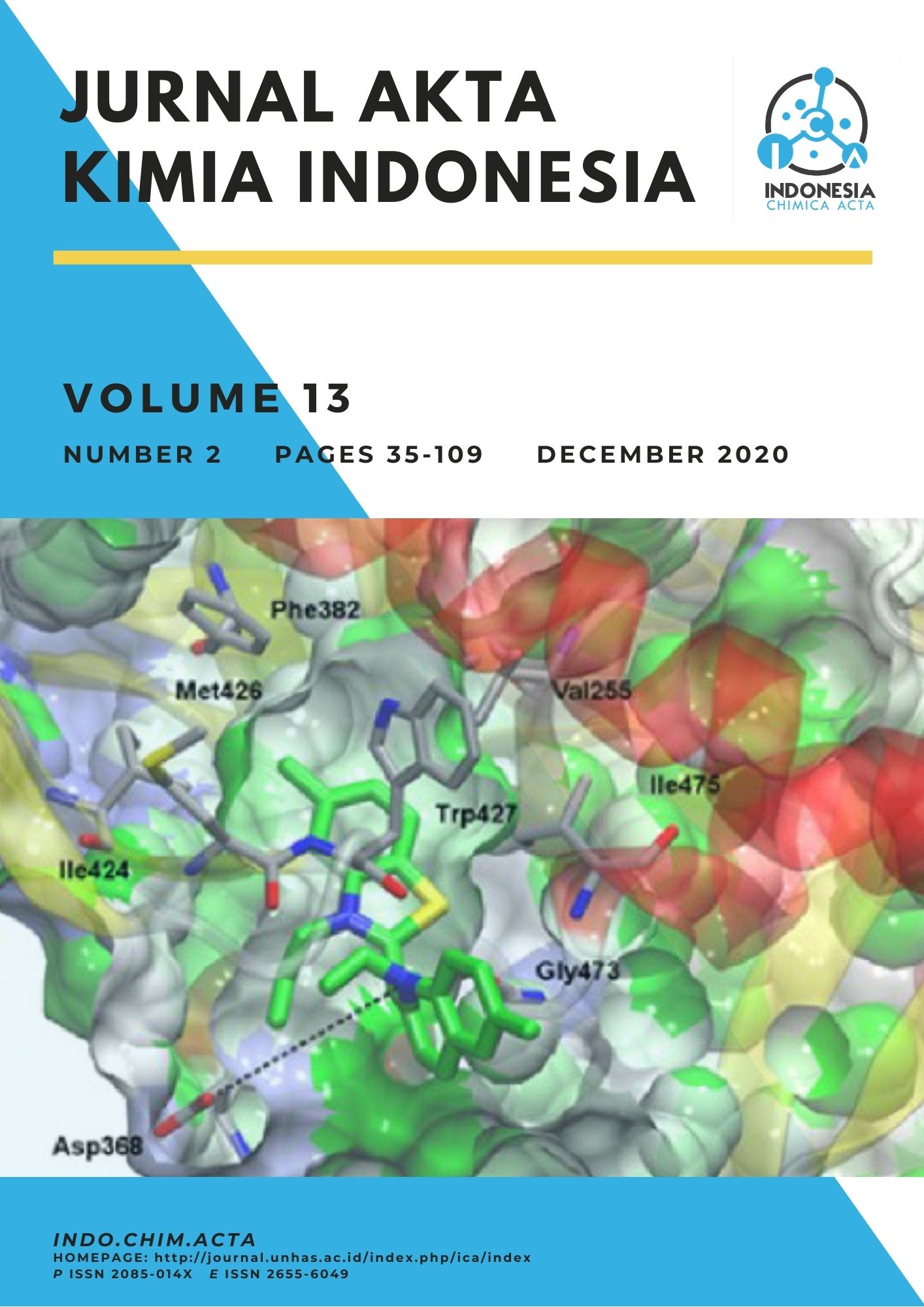Main Article Content
Abstract
The development of new antibiotics is an urgent need amidst the reported increase in bacterial resistance. The n-hexane extracts of Moringa oleifera seeds have been known to have antibacterial effects against E.coli and S.aureus. However, the mechanism of inhibition and the protein from these bacteria targeted by the chemical compounds from n-hexane extracts of Moringa seeds remains elusive. ATP synthase subunit c (ATPase c) plays an important role in the synthesis and hydrolysis of ATP providing energy for bacterial growth. It is an attractive for the new antibiotic development. This study aims to computationally study the interaction between the chemical compound from n-hexane extract of Moringa seeds and ATPase c from E. coli and S. aureus that may shed the light on their inhibitory potentials using molecular docking method. The compound trans-9-octadecenoic acid shows the highest affinity energy with ATPase c from E. coli (-4.1 kcal/mol). Meanwhile, 9-cis-octadecanoic acid and glycerol-1,3-dioctadecanote show the highest interaction (-4.3 kcal/mol) with ATPase c from S.aureus. Nonetheless, these interaction energies are lower than a positive control Tomatidine on ATPase c E.coli (-6.9 kcal/mol) and S. aureus (-6.2 kcal/mol). Further in vitro assays are needed to validate their potential as novel antibacterial candidates.
Article Details

This work is licensed under a Creative Commons Attribution-ShareAlike 4.0 International License.
How to Cite
Saudale, F., Apriono Sutiono, Kadang, L., Boelan, E. G. ., & Kapitan, O. B. (2020). Molecular Docking of Chemical Compounds from n-Hexane Extract of Moringa oleifera Seeds with E.coli and S.aureus ATP Synthase Subunit C. Jurnal Akta Kimia Indonesia (Indonesia Chimica Acta), 13(2), 43-50. https://doi.org/10.20956/ica.v13i2.11536
